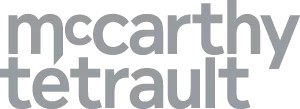- with readers working within the Construction & Engineering industries
- with Senior Company Executives, HR and Finance and Tax Executives
On Monday, February 10, 2025, U.S. President Donald Trump signed executive orders ending exemptions to section 232 tariffs on steel and aluminum imports so as to reimpose a 25% tariff on all steel imports and raise the 10% tariff on aluminum imports to 25%. These new tariffs apply to all nations — including Canada — and bring an end to exemptions negotiated during the imposition of similar measures by the previous Trump presidency. Notably, this announcement does not abide by the 60-day consultation period required prior to the imposition of section 232 tariffs, as set out in the November 30, 2018, U.S.-Canada side letter to the Canada-United States-Mexico Agreement.1 President Trump also indicated that he would be announcing "reciprocal tariffs" in the coming week, meaning import duties on any product originating from a country which had levied duties on U.S. goods. These measures come despite the 30-day reprieve that was negotiated between Canada and the United States in respect of the U.S.' stated intention to apply a 25% blanket tariff on all Canadian goods, with the exception of energy products that would have been subject to a 10% tariff. Should these tariffs be imposed following the reprieve, they will be cumulative on top of the new aluminum and steel tariffs — meaning that imports of steel and aluminum from Canada would be tariffed at 50%.2
The White House has released a "fact sheet3" indicating that previously granted exemptions (including to Canada) had rendered tariffs ineffective and "inadvertently created loopholes that were exploited by China and others with excess steel and aluminum capacity, undermining the purpose of these exemptions." It notes that the tariffs are intended to strengthen America's steel and aluminum industries and promises that "tariffs work" and "can be an effective tool for achieving economic and strategic objectives."
The fact sheet does not address the current lack of capability for US domestic sources to fulfill US industrial needs for aluminum, or the long lead times to increase capacity. Nor does it address how such needs could possibly be filled given the primary input for aluminum production, energy, is rapidly rising in price in the United States, both absolutely and compared to locations with plentiful renewable production such as Quebec's hydro power capabilities.
The executive order "Adjusting imports of steel into the United States4" provides that the new measures in relation to steel will take effect on March 12, 2025. It includes as justification "that steel articles are being imported into the United States in such quantities and under such circumstances as to threaten to impair the national security of the United States," and notes in particular that "imports from Canada have increased 18 percent since Canada was excluded from the section 232 tariffs" imposed in 2018 under the previous Trump presidency (and set out below in greater detail). The executive order goes on to state that imports have surged "in excess of historical norms of trade across numerous key product lines" "while authorities in those countries have supported otherwise uncompetitive producers with subsidies and other interventions that have exacerbated the global excess capacity crisis." No drawback will be allowed against these tariffs.
Notably, the executive order also eliminates the tariff exemption for Ukraine on the basis that the benefits thereof have allegedly largely accrued to European Union states rather than the Ukrainian steel industry. It states, "that steel articles imports from Ukraine threaten to impair the national security [such] that it is necessary to terminate the temporary exemption for imports of steel articles and derivative steel articles from Ukraine."
The executive order regarding steel further terminates the authority of the Secretary to provide relief from the additional duties imposed on steel articles not produced in the United States in sufficient quantities.
The order "Adjusting Imports of Aluminum into the United States5" provides that heightened tariffs of 25% on aluminum will also come into effect March 12, 2025, and that the scope of the tariffs will be expanded to cover additional, as of yet unspecified, "derivative aluminum articles". As with the steel tariffs, no drawback will be allowed and the authority of the Secretary to provide relief is terminated. Once again, imports from Canada are specifically cited as justification for the imposition of a tariff: "in particular, the volume of U.S. imports of primary aluminum from Canada in 2024 was approximately 18 percent higher than the average volume for 2015 through 2017."
The Canadian government has not yet announced details on their proposed response, although Prime Minister Trudeau has indicated that Canada will respond if the tariffs are imposed and that Canada is working with allies on this response.6 Canadian businesses, including exporters of steel and aluminum products to the United States as well as importers of U.S. goods into Canada, are cautioned to consider the U.S. measures and Canada's retaliatory measures carefully to determine the impact on their businesses.
A history of U.S. steel and aluminum tariffs and Canada's response
These executive orders mark a doubling-down on the section 232 national security tariffs on steel and aluminum by President Trump, imposed at a rate of 25% on steel imports and 10% on aluminum imports on trading partners in 2018.
These tariffs were applied in response to investigations under section 232 of the Trade Expansion Act of 1962, led by Commerce Secretary Wilbur Ross. Section 232 permits the U.S. government to adopt tariffs or repeal measures encouraging international trade if the President deems, on advice from the Department of Commerce, that articles are being "imported into the United States in such quantities or under such circumstances as to threaten to impair the national security."
In 2018, the Trump administration argued that domestic production by the U.S. steel and aluminum industries was below capacity and needed to rise to 80% of capacity to remain viable. At the time, capacity utilization in the steel industry was under 75%.7 The eight aluminum smelters (operated by three firms) had a combined capacity utilization rate of roughly 43%.8
In response, Canada announced that it would impose and levy surtaxes of 25% on imports of steel and 10% on imports of aluminum. Additionally, Canada announced a 10% surtax charge on imports of various other consumer goods not related to steel or aluminum (such as orange juice and shaving creams).9 Both the U.S. tariffs and Canadian countermeasures came into force on July 1st, 2018, and ended after an agreement to exempt Canadian products was reached in May 2019.
As part of this agreement, Canada agreed to end its retaliatory measures and lifted the tariffs imposed on imports from the United States. The agreement also included a "snap back" provision whereby tariffs could be resumed on a product-by-product basis if imports of aluminum or steel products surge meaningfully beyond historic volumes of trade over a specified period. Canada agreed that any retaliatory tariffs could only be imposed on products in the same sector, and the United States committed to capping any potential further tariffs at 25% for steel and 10% for aluminum.10
Later, by proclamation dated August 6, 2020, President Trump carved out from the exemption "non-alloyed unwrought aluminum provided for in subheading 7601.10" of the Harmonized Tariff Schedule of the U.S. and imposed a 10% tariff on imports of non-alloyed unwrought aluminum articles from Canada.11 The stated rationale for this carve-out was that the 2019 agreement exempting Canada from the tariffs provided for continued monitoring of imports and contemplated the re-imposition of tariffs should import volumes surge.
In response, Canada announced $3.6 billion in tariffs on U.S. aluminum and goods that contained aluminum. The Canadian government published "Notice of intent to impose countermeasures action against the United States in response to tariffs on Canadian aluminum products (Archived)12sup>", which outlined its intention to apply a 10% surtax to a preliminary table of aluminum and aluminum-containing products. The list of potential tariff targets was focused on politically sensitive industries, namely in states critical to President Trump's 2020 re-election. The Canadian government spent one month consulting with Canadians about which U.S. products to target with retaliation, which included:
- aluminum ores and concentrates;
- pigments used in manufactures of paints and dyes;
- unwrought aluminum, both alloyed and not alloyed;
- certain aluminum bars, plates, sheets, strips, foil, tubes, or pipes;
- aluminum wires and cables;
- aluminum sanitary ware;
- aluminum nails, screws, bolts, nuts, and similar articles;
- cloth, grill, netting, and fencing, of aluminum wire;
- various vehicle parts and equipment, including wheel rims and spikes;
- metal office furniture;
- prefabricated buildings;
- aluminum aerosol containers;
- aluminum cans used in the packaging of beverages;
- aluminum table, kitchen, and other household articles;
- other consumer goods such as refrigerators, washing machines, golf clubs, bicycles, and other sporting equipment; and
- various other aluminum containing products.
Following the announcement of these retaliatory measures and consultations with the Canadian government, on September 15, 2020, the U.S. announced that the imposition of aluminum tariffs would be paused.
Canada's response to the latest U.S. tariffs
The Canadian government is expected to respond with retaliatory measures, as it did in response to tariffs announced in 2018, 2020 and last week. You can find our insights on these measures here (2018)13, here (2020)14 and here (2025).15
In October 2024, Canada applied a 25% surtax on imports of steel and aluminum products from China, following the lead of the U.S. The "Final list of steel and aluminum products from China that will be subject to a 25 per cent surtax16" outlines the list of goods subject to the surtax, and includes items such as ingots, coils, wires, bars, and rods.
It remains to be seen whether the Canadian government will apply the same tariffs to U.S. steel and aluminum, or revive the 2018 playbook and focus on politically sensitive steel and aluminum products, and/or increase tariffs on Chinese products in view of U.S. allegations of transshipment. Companies should consider whether the products they are sourcing or supplying fall under any of these lists.
Given that U.S. industry is reliant upon imports that cannot be easily substituted with domestically produced goods in the short to medium term, or potentially at all in the case of aluminum, it is possible that Canada may adopt a more innovative approach than reciprocal tariffs, such as by imposing export taxes or other restrictions on aluminum that is critical to the US defense, aviation, and automotive industries.
Provincial leaders have indicated that they are waiting for confirmation of the federal government's approach before reacting.
As noted above, this situation is extremely fluid, and we expect new information on tariffs and countermeasures to come out of both Canada and the U.S. on a daily basis. As we discussed in our latest client alert; "A 30-Day Reprieve in the US-Canada Trade War: What Companies Should be Considering Now17", there are actions that Canadian businesses can take to mitigate the damage caused by these tariffs. McCarthy Tétrault's International Trade and Investment Law Group has advised, and continues to advise, a large number of clients in a variety of industries on how to navigate the uncertainty caused by the U.S. tariffs and the Canadian countermeasures. We will continue to monitor and report on any further developments in this space and expect the next client alert will provide more details on how these measures can impact supply chains and what strategies could be used to address these impacts.
Footnotes
2 CBC News, "Tariffs atop tariffs? White House says levies on Canada would be cumulative" (February 11, 2025)
3 White House Fact Sheet, "President Donald J. Trump Restores Section 232 Tariffs" (February 11, 2025)
4 White House Executive Order, "Adjusting Imports of Steel Into the United States" (February 10, 2025)
5 Executive Order, "Adjusting Imports of Aluminum into the United States", (February 11, 2025)
6 CTV News, "Trudeau says Canada will respond to Trump's steel, aluminum tariffs if necessary", (February 11, 2025)
7 U.S. Department of Commerce Bureau of Industry and Security Office of Technology Evaluation, "The Effect of Imports of Steel on the National Security" , page 46. (January 11, 2018)
8 U.S. Department of Commerce Bureau of Industry and Security Office of Technology Evaluation "The Effect of Imports of Aluminum on the National Security - January 17, 2018", page 45. (January 17, 2018)
9 Department of Finance Canada, "Archived - Notice of intent to impose countermeasures action against the United States in response to tariffs on Canadian steel and aluminum products"
10 Global Affairs Canada, "Joint Statement by Canada and the United States on Section 232 Duties on Steel and Aluminum"
11 Trump White House Archives, "Proclamation on Adjusting Imports of Aluminum Into the United States" (August 6, 2020)
12 Department of Finance Canada, "Archived - Notice of intent to impose countermeasures action against the United States in response to tariffs on Canadian aluminum products"
13 "Canada Imposes Retaliatory Measures in Response to U.S. Steel and Aluminum Tariffs" (June 29, 2018)
14 "U.S. and Canadian Supply Chains Threatened as New Trade War Re-erupts" (August 10, 2020)
15 "Canada Responds to U.S. Tariffs – What Businesses Need to Know" (February 3, 2025)
16 Department of Finance Canada, "Final list of steel and aluminum products from China that will be subject to a 25 per cent surtax"
17 "A 30-Day Reprieve in the US-Canada Trade War: What Companies Should be Considering Now" (February 5, 2025)
To view the original article click here
The content of this article is intended to provide a general guide to the subject matter. Specialist advice should be sought about your specific circumstances.







